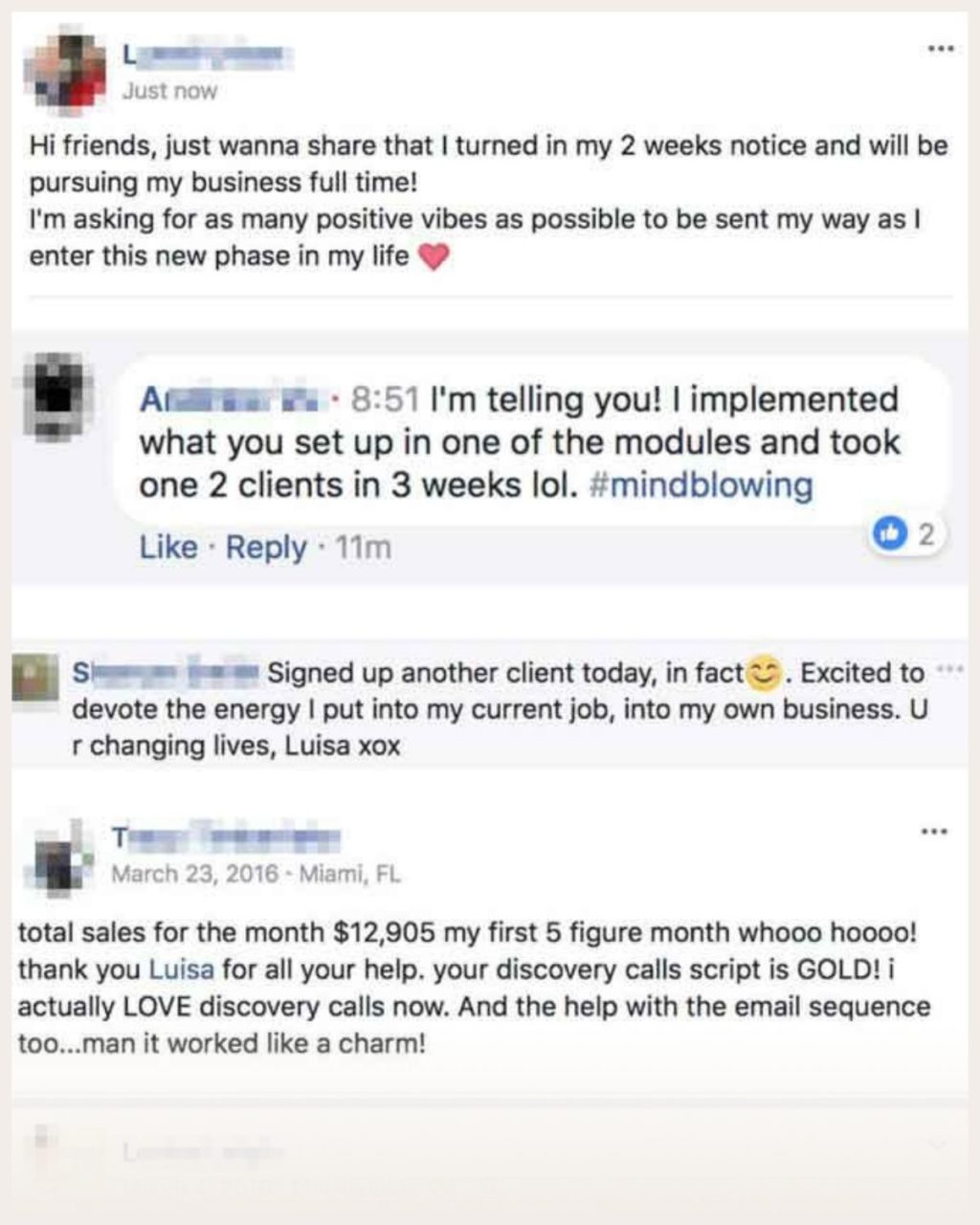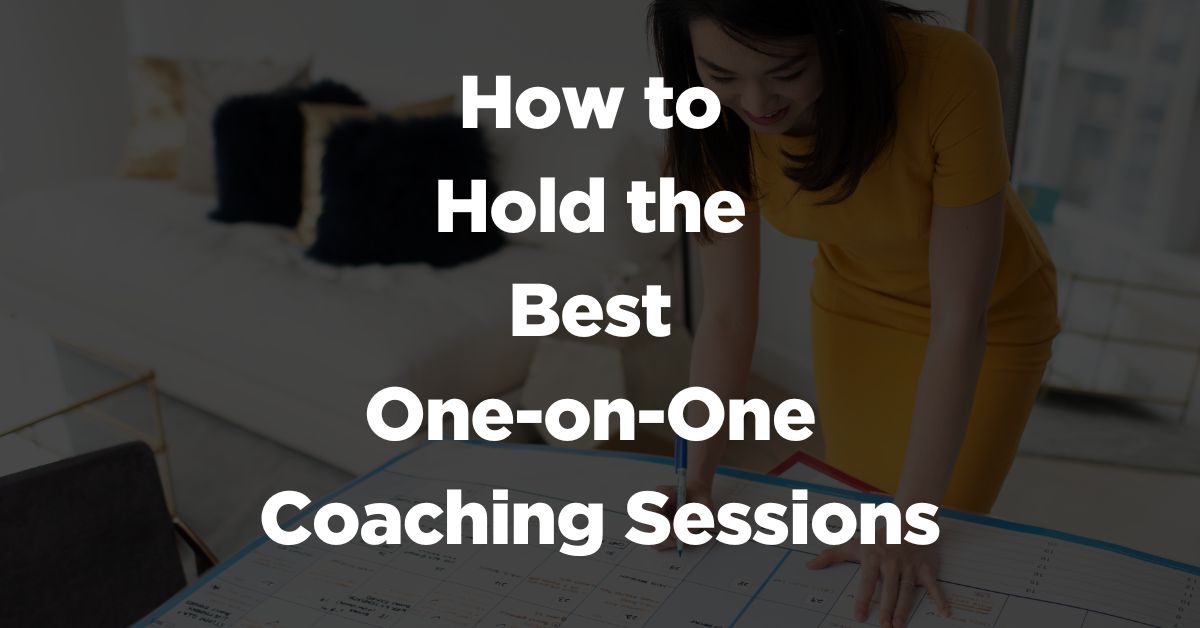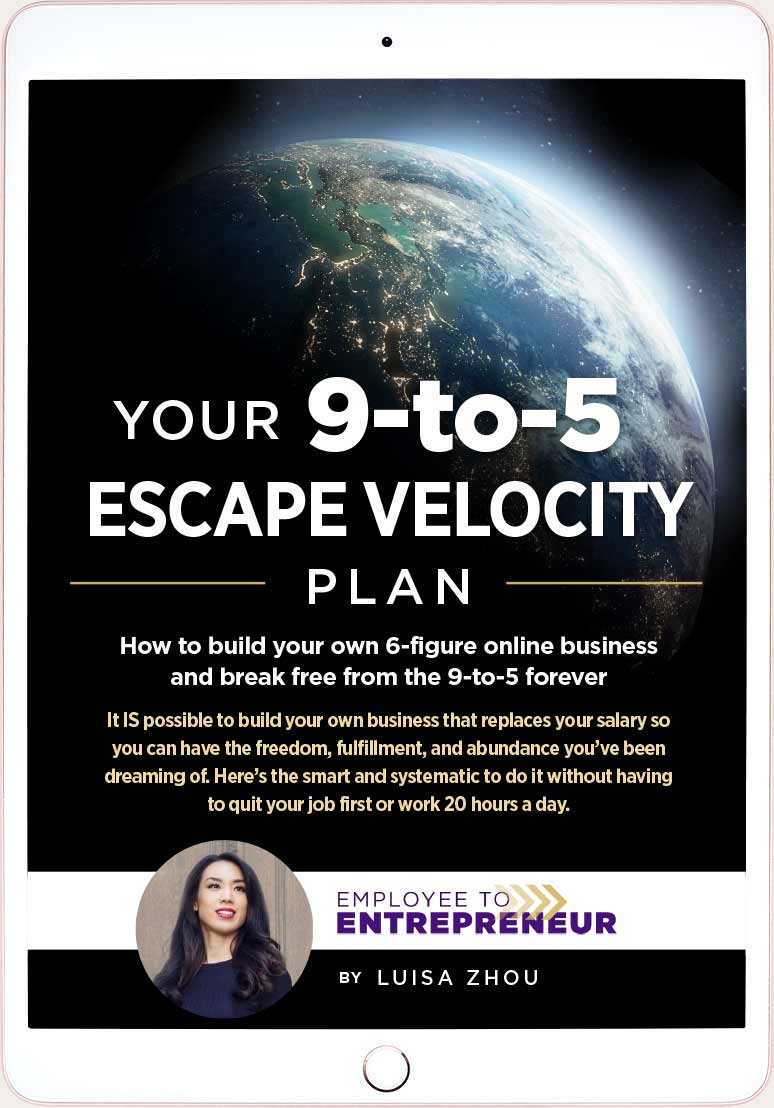How do you structure an effective one-on-one coaching session?
Learning how to coach sets you apart. But few people know how to structure one-on-one coaching in a way that helps clients get results.
That’s what you’ll learn today.
Ready? Let’s dive in!
What is one-on-one coaching?
A one-on-one coach supports clients in reaching their professional and personal goals. The coaching is individualized rather than done in a group setting.
Compared to group coaching programs, you can offer each of your clients more personalized attention and tailored strategies. Those strategies can then be adjusted based on the client’s goals and progress.
And individual coaching is in demand. After all, the industry is worth $1.4 billion, and there are as many as 1.5 million online searches made just for life, business, and executive coaches each month.
But there are far more niches you can coach in, including:
- Health coaching
- Career coaching
- Relationship coaching
- Mindset coaching
- Financial coaching
…And many more niches. (See a full list of coaching niches here.)
What’s more, coaching is increasingly done online. That makes one-on-one coaching flexible for you as a coach – and your clients.
Your clients get to work with you no matter their location and from the comfort of their homes. Similarly, you get to decide when and where you work.
Here, I talk more about what coaching is:
Ultimately, your job as a coach is to help your clients get results.
That’s the value you provide as a coach and why your clients decide to work with you.
For instance, here are just a few things my clients have said about my course program, Employee to Entrepreneur, which builds on the one-on-one coaching I offered earlier in my business:

These testimonials help other clients trust my processes.
But what other benefits does one-on-one coaching have?
Let’s take a look.
The benefits of one-on-one coaching
One of the biggest benefits of one-on-one coaching is that you focus on one client at a time. Instead of focusing on several group coaching clients at once, you help clients get faster results.
According to research, other benefits of coaching include:
- 99% of those who hire a coach are “satisfied” or “very satisfied”
- 95% of clients say that coaching has significant positive effects on their cognitive outcomes
- 70% of those who invest in coaching see improvements in their work performance, relationships, and communication
- The median coaching ROI is 7x the investment
- One-on-one coaching helps reduce procrastination and facilitate goal attainment at the same rate as group coaching
How to structure one-on-one coaching sessions (3 steps)
You might be thinking, “I have no idea how to become a one-on-one coach, much less structure a session. Where do I start?”
Let’s talk about how to structure the type of one-on-one session that will help your clients achieve their goals as fast as possible.
Get the Ultimate Guide
for building a
6-Figure Coaching Business so you can achieve more freedom!
What to do before your call
First, we’ll take a step back – your coaching process starts before you hop on your first call with them. Here’s how to get the information you need to hold highly effective coaching sessions.
Send an intake form
Before you have your first meeting with a new client, ask them to fill out an intake form.
An intake form allows you to get to know your client before you start working together. You’ll learn what their goals are, their struggles – everything you need to know to help them in the best way.
If you’re not sure where to start, I’ve put together a list of more than 50 intake form questions.
To share your intake form, you can use a Google Doc your client fills in and sends back to you.
Come up with your call structure
The next step is to plan your call.
Each coaching call will happen once or twice a month, depending on your offer, and will last between 30 minutes to one hour.
How do you know what to say on your calls, though?
What you don’t want to do during your call is figure it out as you go.
You need a roadmap for your call before it happens.
That’s not to say that you have to spend hours scripting your call. (I spent three hours planning my first call. If that’s the level of preparedness you need, go for it. But you don’t need to.)
However, you need to know what you’ll talk about on your first call.
That’s how you help your clients get results.
In this short video, I show you how to script your call:
Identify a goal
The key to a successful coaching call is to ensure that it serves a purpose – a goal.
And that goal builds on the overall goal your client is working towards.
For instance, let’s say you’re a career coach. The goal of your coaching package might be to help your client get promoted.
Every call helps your client work their way towards that goal.
How? That’s what we’ll talk about next.
What to do during your call
The most important thing to do during a call? Help your client make real progress by using subgoals.
What are subgoals?
They are the call-specific goals that build towards your overall goal. In between, you have monthly goals that help you structure your work and follow up on your client’s progress.
Let’s say you’re helping your client get a promotion.
On a call, you might work with them to understand the value they bring to their employer and help them position themselves in the right way.
During the following call, you might work on creating a pitch.
And so on.
What to do after your call
When you’ve wrapped up your one-on-one coaching session, you’ll have a couple of tasks to complete.
First, you’ll need to send a recording of the call to your client so that you have a way to document coaching conversations.
Second, your coaching doesn’t just happen on calls. As a coach, you also answer your clients’ questions in between calls and check in on them.
One way to keep your client focused and accountable is to ask them to share a summary of their work 24 before every call. Ask them:
- What did you do this week?
- What went well?
- What do you want to focus on during our call?
Now that we’ve covered the structure of a one-on-one coaching session, let’s talk about what kind of questions you should ask to ensure it’s a great one.
Questions to ask in one-on-one coaching sessions (4 steps)
Great coaching sessions happen when you act as more of a coach-sultant than a questions-based coach.
As a coach-sultant (as I call it), your clients ask the questions and you provide the answers rather than the other way around. This approach allows coachees to reach their goals more quickly and sustainably.
But in a world where most people don’t know which questions to ask – or how to ask them – you’ll need to help your clients communicate by asking a few questions yourself.
The best coach-sulting questions are the ones that create impactful conversations.
4 questions to ask
During my time as a coach-sultant, I’ve asked my clients thousands of questions, but these are the ones I keep coming back to.
Where can I give you extra support?
This is my favorite way “help me help you” question because it helps me identify any obstacles that are standing in my client’s way and figure out a way to overcome them.
What questions are coming up for you?
This question is a great way to encourage my client to ask their own questions and dig a little bit more deeply, whether the questions are practical or reflect any fears or anxieties coming up.
How do you feel about that?
I strongly believe that this is one of the most important questions you can ask your client during a session.
That’s because our emotions steer us more than the logical parts of our brains. Even while our clients know the importance of doing something, they might be self-sabotaging.
Asking this question at the right time will help determine the support they need to actually make progress.
What’s your biggest takeaway from today’s call?
There’s no better way to wrap up a session than to help your client reflect on everything you’ve covered together.
But it’s also good for you, the coach, because it will help you understand what’s resonating with them while building a stronger relationship.
Those are my four favorite questions for any session – but let’s take a look at what type of questions will help you start the session on the right foot.
To begin the call
The questions you ask at the start of your call are particularly important. After all, they set the tone. They’ll help your clients open up and ensure effectiveness right from the start.
Get the Ultimate Guide
for building a
6-Figure Coaching Business so you can achieve more freedom!
The best ones to ask?
- “What do you want to focus on during our call today?”
- “Last time, you mentioned X. How has that been going?”
- “What stuck with you from last time?”
- “What can I give you some extra support for today?”
To end the call
When you end your one-on-one coaching sessions, your clients should always know what the next steps are and how to reach them.
That’s why I recommend asking strong closing questions like these:
- “What are your action steps for next time?”
- “How are you going to keep yourself accountable until next time?”
- “Was there anything you wanted to talk about today but didn’t get to cover?”
Probe deeper
During your call, you might need to get your client to dig deeper to understand what’s keeping them from reaching their goal.
Here are some of the best probing questions to ask:
- “Where do you feel stuck?”
- “How is X going?”
- “Have you tried X?”
- “How did you react to X?”
- “How have you reacted to X in the past?”
- “Have you thought about this from another perspective?”
- “What fear is coming up for you?”
- “Why do you want X?”
Let’s talk about what these questions could look like in your own sessions.
A health coach could mention that “Last time, you mentioned it was difficult to find motivation to work out three times a week. How is that going?”
If you’re a dating coach, you’d say, “I know it’s difficult not to get a call after a second or third date; how have you reacted to this situation in the past?”
And a mindset coach might ask, “What would be an alternative solution to engaging in negative self-talk when you encounter an inconvenience?”
Now that we’ve talked about the best questions to ask in your coaching session, let’s take a look at how to use them in your conversations with your clients.
Coach: Tell me about what’s going on right now.
Client: I’m feeling somewhat overwhelmed by all of the moving parts on my journey toward reaching my goals.
Coach: I understand. What do you want to focus on during our call today?
Client: I’d like to focus on X – I just can’t seem to reach that goal because of Y.
Coach: Okay. Let’s explore that a bit more. Where do you feel stuck? What have you tried so far?
As long as you ask the right type of coach-sulting questions, you’ll be able to come up with a solution together.
The 4 top one-on-one coaching tips
How do you go from good one-on-one coaching to great?
Here are four steps:
Be truthful
One of the toughest jobs of a coach is to hold your clients accountable. You need to understand what type of delivery works for different types of people and situations (a skill you develop the more you coach).
For example, if my clients don’t do the work or don’t share any updates with me, I call them out on it and remind them of the goals they’re working towards.
Offer alternatives
You aren’t responsible for your clients’ results.
Ultimately, your clients need to do the work to get to where they want to go.
But if your clients are doing the work, then it’s your job to help them figure it out.
For instance, if a client would come to me and say they did the work they were supposed to do but aren’t getting results, I don’t say “It should work.” Instead, I put on my problem-solving glasses.
Or if someone didn’t do the work, I don’t ask them to keep on doing what they’re doing. I sit down with them and figure out why they aren’t doing the work or if there’s another way that would work better for them.
Offer a vision
With your experience in your coaching niche, you know what’s possible for your clients.
They don’t always know it themselves.
For example, I’ve always invested in my own growth and hired coaches and consultants to help me grow faster. And when I was planning one of my first course launches, I felt like making $300,000 was a HUGE stretch – but I decided that would be my goal.
My coach asked me to challenge myself more and suggested a $1 MILLION launch.
I listened to her – and my launch ended up bringing in $800,000.
That’s how powerful coaching can be.
How do you price your offers, though?
Let’s take a look.
How to price your one-on-one sessions
When someone is new to one-on-one coaching, I always recommend offering a lower rate of $1,500 for a three-month engagement (not per session).
That way, you’ll build your business, hone your coaching skills, and get comfortable with one-on-one sessions at the same time.
I talk more about this pricing strategy here:
However, you don’t have to offer one-on-one sessions forever.
Once you’ve reached anywhere from three to ten clients, you can start thinking about transitioning to group coaching.
A group coaching program is a great way to scale your online coaching business. I recommend setting calls with the group every two weeks, plus offering a second place to connect, such as a Facebook group or Slack channel.
Now, group sessions are structured a bit differently. You’ll need to go through each client in order and spend about ten minutes with them discussing their goals, progress, and thoughts.
When you’re at that point, you can read all about it in my group coaching guide.
Next up:
The best one-on-one coaching tools.
Best tools for online one-on-one coaching
You don’t need a lot of tools to grow your coaching business. But there are a few I use that help you streamline your business.
Here they are:
- Zoom is a great option for live video chats, but more than that, you can use it to schedule and record your meetings.
- Google Workspace lets you set up a Gmail account with your own domain and organize your Google Docs to share coaching intake forms and other coaching material with your clients
- Dropbox Sign is an e-singing tool that helps you automate your coaching contracts
- Stripe is a payment processor with which you can easily set up invoices
Next steps
There you have it: A complete guide to one-on-one coaching, including questions to ask, great tools to check out, and how to price your offers.
Get the Ultimate Guide
for building a
6-Figure Coaching Business so you can achieve more freedom!
You’ve come really far. Learning to coach is a key pillar in your business.
But the next step is to build your business.
How? In my six-figure coaching blueprint, I share the things that make all the difference if you want to build a successful coaching business.
And they’re probably not what you’d expect (because here in LZ Land, I teach things differently – I help you get results in the most effective way, just like I’ve built my own businesses to multiple seven figures).
Grab your own copy now!
Read more:
Create a Great Coaching Package (Guide)
Build a Coaching Business (Guide)
Sell Your Coaching Offers (Guide)









2 Responses
Thanks for also talking about the kinds of probing questions that I could expect from a health coach. I’m interested in looking for a good health coaching session soon because I’m thinking about finding a good way to regulate my body weight more easily. Finding ways to do that beyond just fixing my diet would be a good idea.
You’re welcome. Hope they help you find the right coach for you!